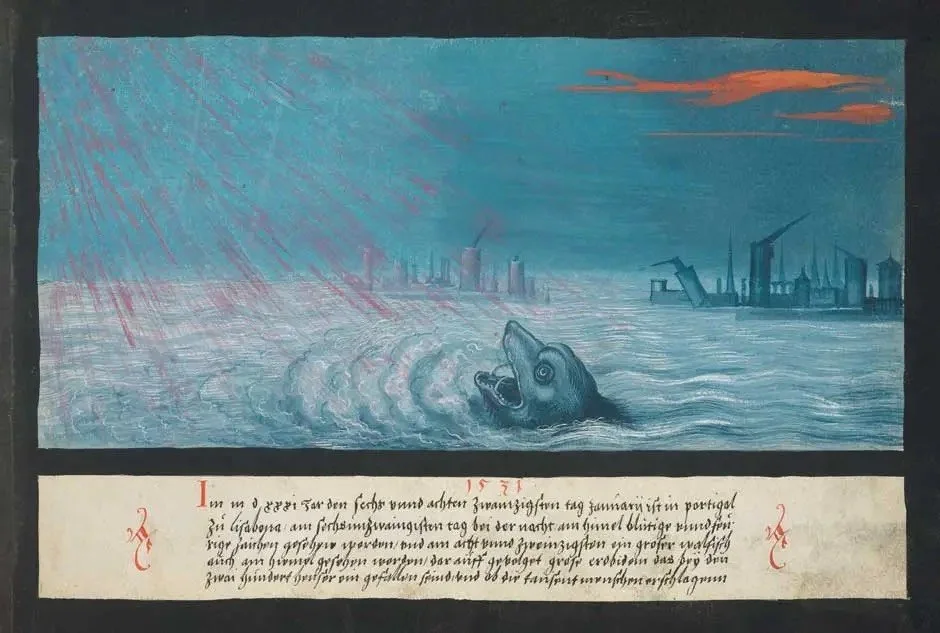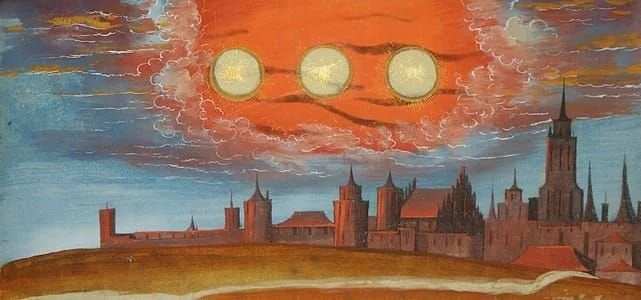Floating City
Interactive Installation
Meta Quest 2
Creative Coding(Unity), Buoy, string, spray paint, wood, sound
2023
A VR experience portrays this disparity by submerging viewers in the different landscapes of Derna and New York after the floods. Viewers encounter buoys in the sea and face the two cities as drifters. One city rises ceaselessly with powerful propellers, while the other descends deep below the sea into an endless abyss. After thousands of climate refugees lose their land, they come across a small boat shaped like a coffin in front of the descending Derna, reminiscent of the medieval cities in the 'Augsburg Book of Miracles.' This experience raises questions about the consequences of our pursuit of control and the illusion of infinite capability in the face of nature's power.
September 2023 Flood in Libya’s Derna
Over the weekend of September 9(2023), the Mediterranean Storm Daniel swept through eastern Libya, causing substantial destruction due to heavy rainfall and flooding. According to the Center for Disaster Philanthropy's report, this flood destroyed over 2,217 buildings. The UNDP estimates around 10,000 structures were damaged or destroyed, including health facilities (85% non-functional), 117 schools, and it left approximately 43,421 individuals displaced in northeastern Libya.
September 2023 New York floods
About 20 days later, on September 29, 2023, heavy rainfall led to flooding in areas of New York as well. The rainfall accumulation reached 300mm over the two-day period, not as severe as Derna (400mm), but New York's rainfall over the 10 days caused damage from severe flooding. However, New York quickly demonstrated greater resilience than anywhere else, and the disaster-stricken areas swiftly regained stability after the heavy rains subsided.
Augsburg Book of Miracles
The 'Augsburg Book of Miracles,' estimated to have been produced in the 16th century, left a record of mysterious phenomena believed to have been witnessed, through beautiful yet fear-inducing illustrations. Before the invention of the telescope, medieval people connected natural phenomena to divine stories, reflecting awe, fear, and reverence for the sacred in their perspective of the world. How, then, have our fears transformed today?
Climate polarization and urban infrastructure
The ability to extract resources and the power of unlimited capital have built more robust city infrastructures than before, with some cities amassing wealth beyond what a single country can accumulate. This capital power, in turn, creates powerful infrastructures to protect the city and promoted for strong resilience. Regarding the current situation, someone can say that we have lost control. But the fundamental driving force behind the current confusion stems from the belief that "we can control."
The desire for infinite and proliferating assets, coupled with confidence in human capabilities, has further amplified the possibility of this 'control.' The systems which exploit the world, develop, and destroy greedily, relentlessly pushing the boundaries to match that pace without limits.
But did the illusion of this 'infinite capability' potentially lead us to a supposedly omnipotent and secure place in response to the medieval fear of nature that people felt? Have we truly been liberated from the fear that nature instills in us?
In real world, the greedy cities have become, the more secure. And the other cities unable to keep up with this greed are left to confront the fear of nature in a more brutal way. In 2023, the New York's Transportation Infrastructure section of capital plan represented a $9.4 billion, on the other hand, in Derna, the capital plan of up to $2 million was allocated to renovate the dams but it was ignored and it become a main reason of this disaester.




